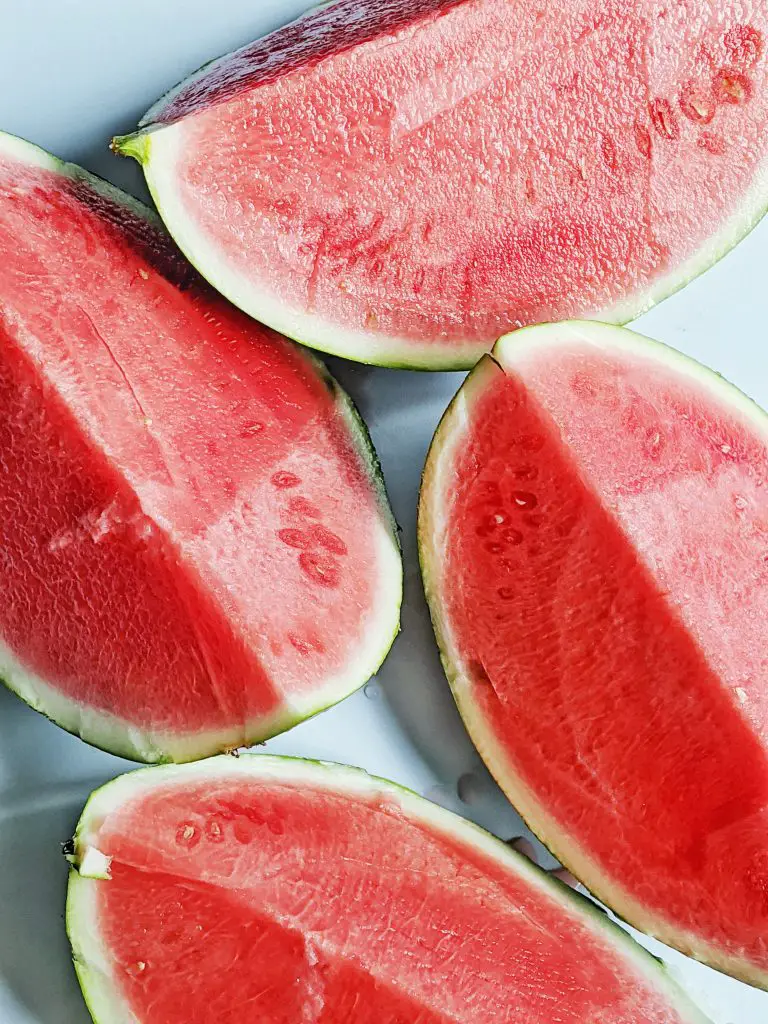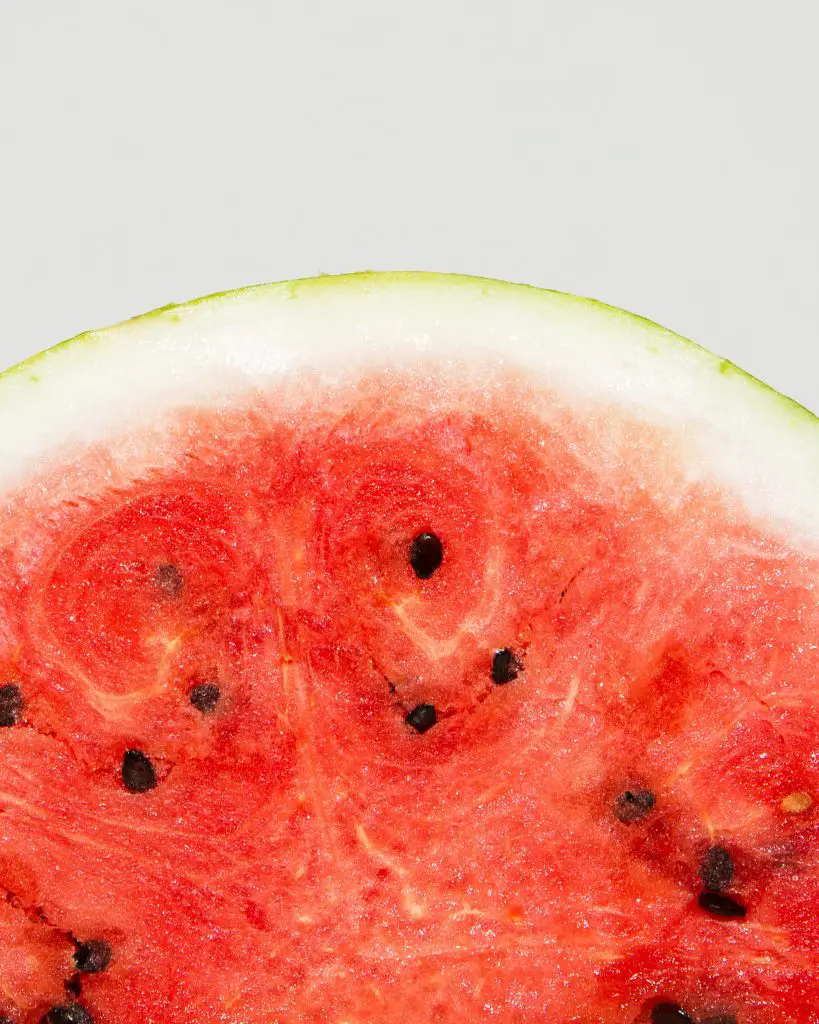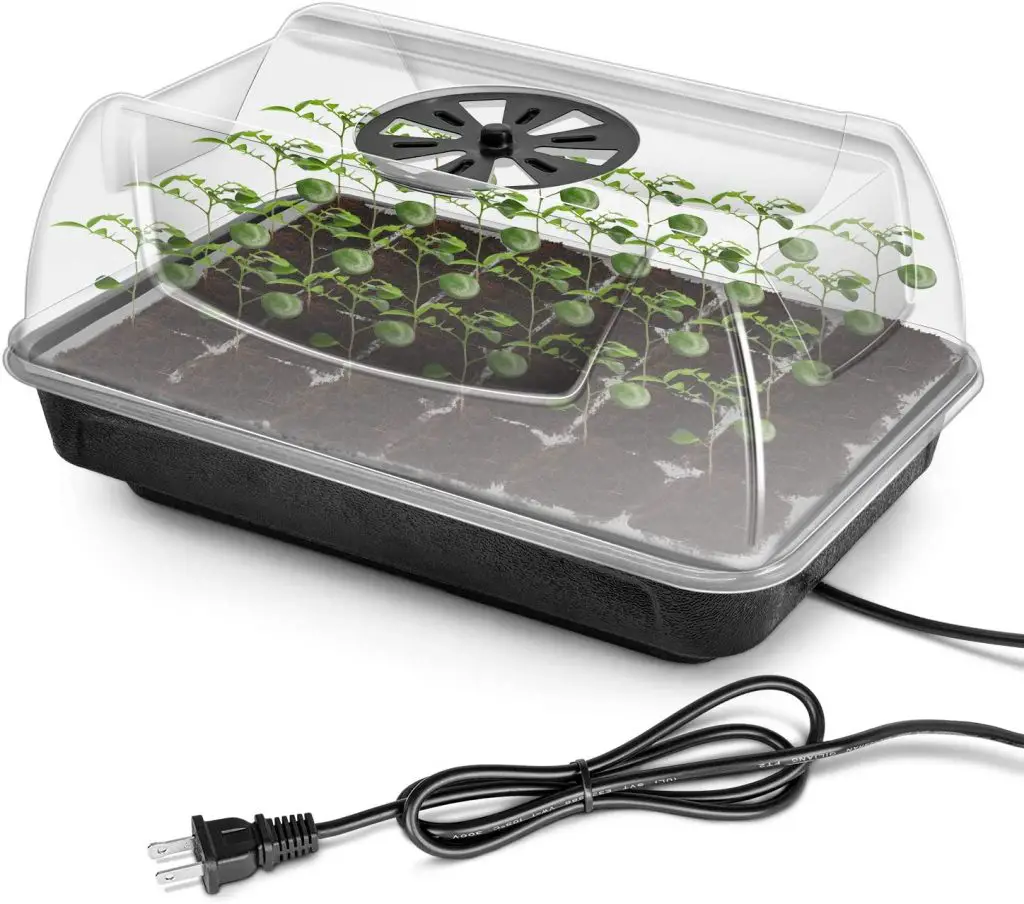How Many Seeds In A Watermelon? Watermelons are one of the most popular summer fruits that is eaten widely throughout the world. However, have you ever wondered just how many seeds are in each fruit?
There are approximately 150 seeds in a watermelon that is approximately 2 lb in weight according to a 2002 Israel study. However, the study also shows that the number of seeds increases with weight of the fruit which suggests that for larger types of watermelon the amount of seeds is likely to be much higher.
The other factor affecting the number of seeds produced in a watermelon is the density of the planting. Researchers in the Israel study showed that increased density resulted in higher seed production per fruit. This suggests that when the plants have less nutrients and resources available to them that they focus on producing additional seeds which is possibly related to ensuring the survival the species.
How Big Can Watermelons Get?
Given that one of the factors affecting the number of seeds is the size of the fruit you may ask how big can an actual fruit get. The size of watermelons varies substantially depending upon the particular variety with some varieties producing fruit that are as small as 1 lb (0.5 kg) through to varieties that produce fruit that are up to 40 lbs (20kg). To read more about the particular varieties at either end of the scale click here.
Watermelons can be divided up into four major categories which are; seedless, orange-fleshed, icebox, and picnic watermelons. The largest of these groups of watermelons is the picnic melons which are typically 30lbs (15 kg) pounds or more in weight. They are named picnic melons because play can feed a large group of people in the single sitting which commonly occurs at a picnic.
The icebox varieties are at the opposite end of the scale and make up those varieties that are relatively small. They are named icebox varieties because they can be stored in an icebox due to their relatively small size.

Can You Plant The Seeds From A Watermelon?
Watermelons have two types of seeds, white seeds, and black seeds. The white seeds are edible seeds that are immature and are the only type of seed that you will find in a seedless watermelon. These are not capable of producing a watermelon plants if planted.
However, the black seeds from the watermelon can be planted and they will produce a watermelon the following year. however it’s important to note that if you are planning to pick seeds from a watermelon that was purchased from the local store there is some risk that you will not get the same variety if you grow a plant
The reason for this is that the majority of commercially produced fruit is grown from hybrid seeds which are genetically unstable. This occurs because the harvested seeds are produced via cross-pollination of two varieties which can be subsequently cross-pollinated to produce quite a different fruit.
If you want to grow your own watermelons and be able to collect the seeds year-on-year you need to purchase heirloom variety seeds which are also sometimes referred to as open-pollinated varieties. To purchase these types of seeds would highly recommend that you visit seeds now because they specialize in Heirloom Seeds and have a wide range of vegetable varieties available at an extremely low cost. To visit their website click the button below.
How Are Seedless Watermelons Grown?
Seedless watermelons are a particular hybrid variety of seed that has been specially designed to produce a higher number of chromosomes than normal varieties. Because of this mismatch in chromosome numbers, these varieties do not cross-pollinate when they’re grown from seed which means that no viable seed is produced in the fruit. ie white seeds are produced in the fruit, the black ones are not.
Can Watermelons Be Grown At Home?
Watermelons can be easily grown in your garden at home and they will produce between 2 and 4 melons per plant on average however there are some varieties such as Sweet Siberia that will produce substantially more fruit per plant. To read more about this click here.
If you are growing watermelons at home I would highly recommend that you select varieties that produce a larger number of smaller fruit. The reason for this is that it is much easier for a family to consume smaller fruit and store the remainder in a fridge rather than having to consume a 40 lb (20kg) melon.
Planting Watermelon Seeds
Watermelons like other plants in the cucurbit family are frost-sensitive and require warm temperatures to grow well. As a result of this most gardeners start their seeds off in a seed tray as it it is easier to control the growing conditions.
If you are wanting to get a particularly early harvest it is advisable to use a heated propagation tray and plant the seeds in early spring. The advantage of a heated propagation tray is that it will ensure that there is a constant level of heat which will help the seedlings to get off to the best possible start.
If you are considering purchasing one of these items the product we would recommend is the ipower heated propagation tray which is available on Amazon. The reason we recommend this particular product is because it has a removable modular seed tray which is the component that is most likely to wear out first in the unit. So being able to replace this parts easily will maximize the life of the unit. Additionally, it has a humidity dome to help maintain the ideal growing environment for the seedlings.
To plant the seedlings start by filling a seed tray with good quality seed raising mix and planting the seeds at a depth of approximately 0,5 inches (1 to 2 cm). If you are using a modular seed tray we would recommend that you plant between 2 and 3 seeds per cell to ensure that you have at least one plant coming up in every cell.
In reasonable conditions the seedlings will appear after 7 to 14 days. If more than one seedling comes up per cell then remove the weaker seedlings leaving one plant per cell. The seedlings will need to spend approximately 6 weeks in the seed tray before they can plant it out into the garden. This should only be done when the ambient temperature outside are around 68°F (20°C) or higher.
Planting Watermelon Seedlings Into The Garden
Once the seedlings are large enough they should be planted In the garden approximately 2 to 3 feet apart. The location that they planted in should be a sunny spot that gets at least 6 to 8 hours of sunlight per day and should ideally have rich moist and free draining soil with plenty of nutrients.
If you are concerned about the amounts of nutrients in the soil it is advisable to add a bag of compost before planting the seedlings. Once the seedlings are in the ground apply a thick layer of mulch approximately 2 to 4 inches thick around the plant, along with snail bait as the seedlings are susceptible to attack early on.
If you live in a region that has variable weather during spring it may be worth considering applying a row cover to the plants to increase the temperature of the soil and accelerate growth.
Once the seedlings are in the ground there is very little maintenance required other than ensuring that they are watered regularly and the beds remain weed-free.

Harvesting Watermelon Fruit
Watermelons will typically take approximately 120 days to reach maturity from the date that the seeds are planted. However, telling when a watermelon is ripe can be a little bit tricky for novice gardeners. The three signs that the fruit is approaching the point of harvest are the vines attached to the fruit will weather and dry out. Secondly, the patch underneath the watermelon that starts out white will begin to yellow indicating that the fruit is ripe and the third sign is that the melon will produce a hollow sound when you tap on it.
If you follow these steps you can be expecting to eat watermelons by late summer in your own garden. I hope you found this article, if you have any questions or comments please leave them in the section below.
Relevant Articles
What is The Best Watermelon To Grow?
What Are There Different Types of Watermelon?
How Many Watermelon Per Plant?


